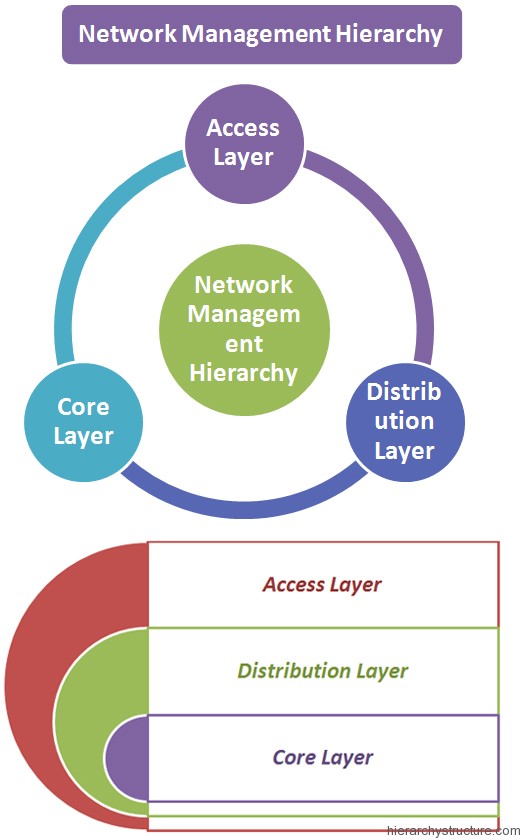With the advancement in the communication and networking technology, the systems are gradually getting more and more complex. Because of this complexity, it is difficult to manage the various network protocols for the maximum effectiveness.
Therefore, a network management hierarchy is really necessary for the smooth management of the complicated networks. By the help of the hierarchical models, it is being possible to develop more flexible solutions. The hierarchy makes it relatively easy for the network engineers to evaluate and troubleshoot various network models.
According to the network management hierarchy, the network model is divided into three layers namely the access layer, distribution layer and the core layer.
Each layer of the hierarchy is associated with different set of functions and this allows the network designers to accurately choose the network systems based on the functions. The hierarchy is very helpful in reducing the costs associated with the network models. Following are the major layers of the network management hierarchy:

- Access Layer / Concentration Layer
- Distribution Layer
- Core Layer
Access Layer
The access layer is the most important point, where the clients directly access the network. This is also called as concentration layer. The layer manages the traffic by localizing the service requests.
In the campus environments, the switched LAN (Local Area Network) devices with ports serve as the access layers and they render connectivity to the servers and the workstations. In the WAN environment, the access layers provide access to the network with the help of technologies such as Multiprotocol Label Switching, Digital Subscriber Line, Frame Relay and the Integrated Services Digital Network.
For providing connectivity to the remote users, the access layers make use of the multilayer switches. Various types of multilayer features are being used by the access layers such as packet filtering, security, Quality of Service and route propagation etc. These features are implemented combined with the wide area technologies so as to provide the maximum efficiency and to minimize the costs.
Distribution Layer
The distribution layer of the network management hierarchy acts as a separation between the access layers and the core layers. This layer controls the access to the resources that are available at the core layers.
In the campus environment, the distribution layer converts the multiple low speed access links into the high speed core links and isolates any type of network problems. Similarly in the WAN (Wide Area Network) environment, the distribution layer makes a composition of the multiple WAN connections.
At the distribution layers, various important activities such as routing and packet manipulation are being undertaken.
Core Layer
The core layer is the final layer of the network management hierarchy and accounts for fast data transport. The core layer is designed in such a way so as to switch the packets in the minimum possible time and thereby to optimize the communications within the networks. Moreover, the core layer provides alternative paths for the network communication and load balancing.
Know more about Emergency Management Hierarchy Click Here
